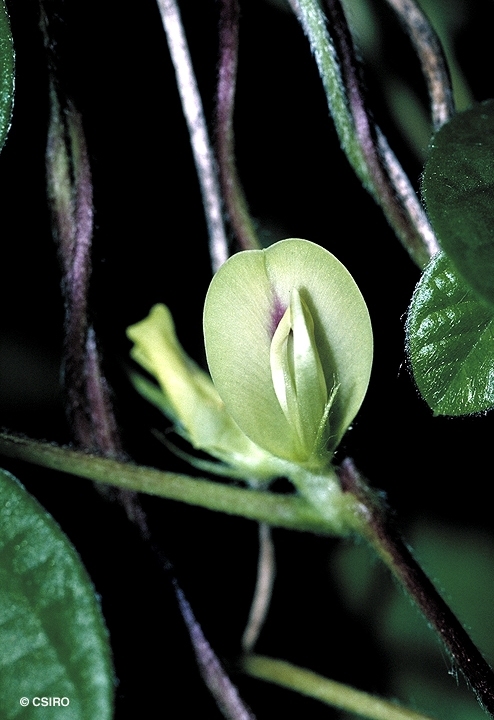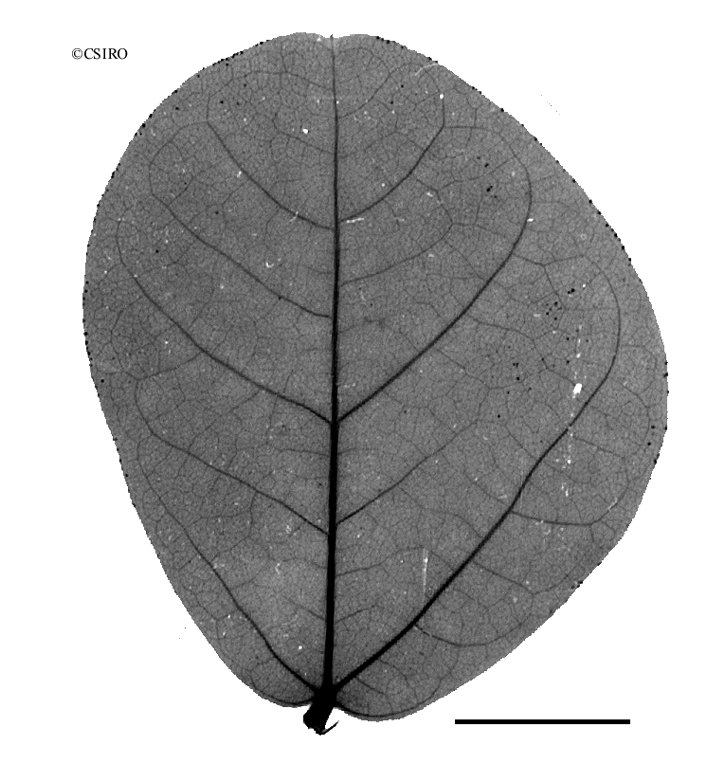Australian Tropical Rainforest Plants - Online edition
Macrotyloma uniflorum (Lam.) Verdc.






Verdcourt, B. (1970) Kew Bulletin 24: 322.
Horse Gram
A slender vine not exceeding a stem diameter of 2 cm.
Leaflet blades about 2.5-4.5 x 2-3.8 cm, stalks about 2-2.5 mm long. Upper and lower surfaces of the leaflet blades clothed in prostrate hairs. Lateral leaflet blades asymmetrical at the base. Stipules hairy, triangular, about 3-5 x 2 mm. Stipels about 2-3 mm long. Lateral veins about 3-5 on each side of the midrib. Stems clothed in white or pale backward-pointing hairs.
Inflorescence a short raceme of two or three flowers, sometimes reduced to a single flower. Flowers about 6 mm diam. Calyx tube about 2-8 mm long, the lobes about 4-5 mm long, with two of the lobes almost completely fused. Petals: standard about 12 x 13 mm, mainly cream with a small purple spot near the apex, obovate in shape with small lobes near the base, and a notch at the apex; wings about 10 x 1.5 mm; keel about 9-10 x 5 mm, formed by two petals fused together in the upper half but free at the base. Stamens 10, the filaments of nine stamens fused to form a tube open on one side, the filament of one stamen free. Ovary clothed in hairs. Stigma dish-like, margin hairy. Ovules about eight.
Cotyledons without venation, about 4-5 x 3-4 mm, obovate, held erect and parallel to the stem. First leaves orbicular to cordate, pulvinus present. At the tenth leaf stage: leaflet blades +/- broadly elliptic, apex obtuse or mucronate, base obtuse. Lateral veins about 3 or 4 on each side of the midrib. Stipules +/- elliptic, hairy, about 2 mm long. All plant parts clothed in short translucent hairs. Stems twining. Seed germination time 37 to 117 days.
Occurs in NEQ, CEQ and southwards as far as south-eastern Queensland. Altitudinal range in NEQ from 500-800 m. Usually grows in open forest, sometimes in monsoon forest.
Grown as a grain crop in India; one of the few native Australian species used as a crop. A species of possible significance as a grazing crop but regeneration of soft-seeded annual varieties is poor. Hacker (1990).





